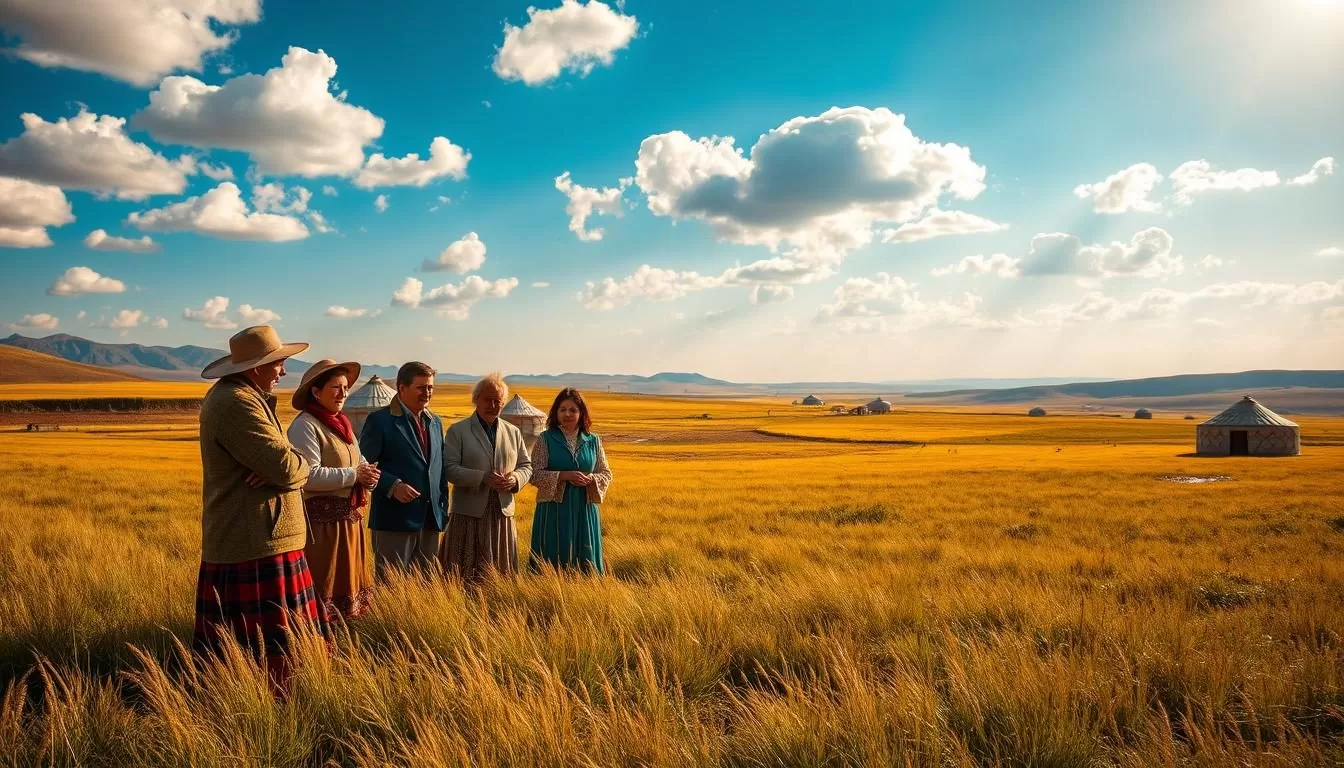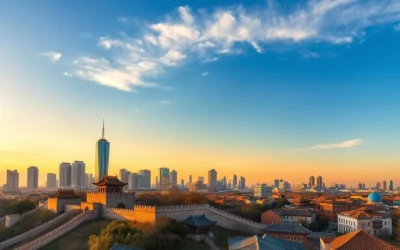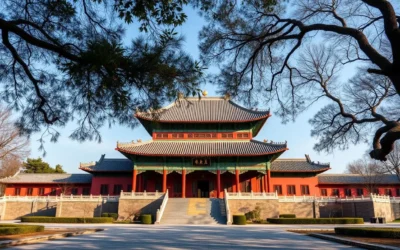✓ Accommodations✓ Flights✓ Rental Cars
When you think about the diverse cultures and languages across the globe, Inner Mongolia stands out as a fascinating example. This area is home to a rich blend of traditions, with the Mongolian language playing a central role in its identity. Alongside Mandarin, it serves as one of the region’s official tongues, reflecting its cultural heritage.
Did you know that over 2.1 million people speak Mongolian here? This makes up a significant portion of the population, with ethnic Mongols accounting for about 17%. The language itself has a unique dialect, standardized in 1979, which differs from the one spoken in Mongolia.
Understanding the linguistic diversity of this region helps you appreciate its cultural depth. Whether you’re curious about its history or its people, the languages here tell a story of resilience and tradition.
Understanding Inner Mongolia’s Linguistic Landscape
The way geography and demographics shape language in Inner Mongolia is fascinating. This area’s vast landscapes and diverse population create a unique linguistic environment. With ethnic groups spread across urban and rural areas, the dialect variations are striking.
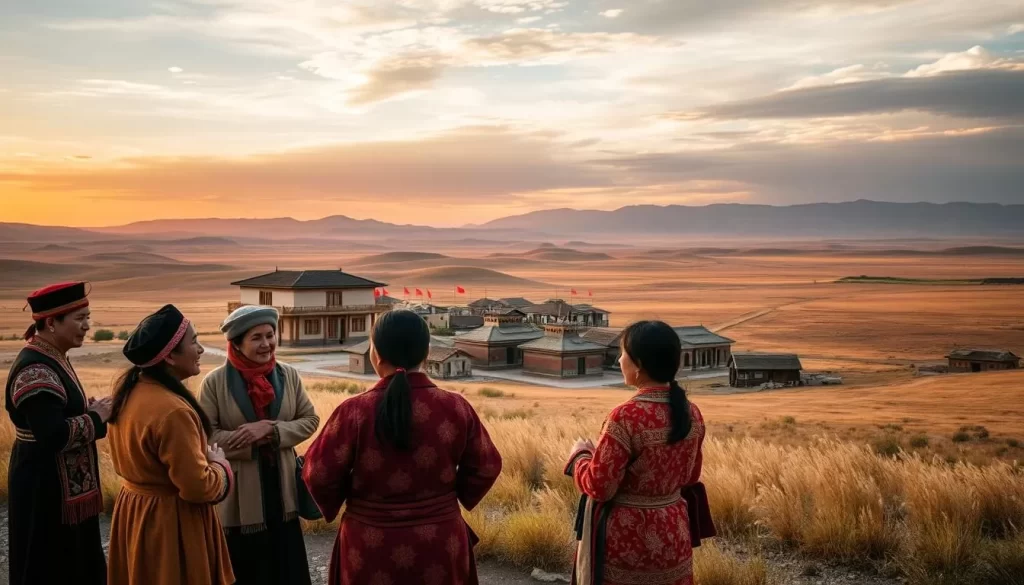
Geographical and Demographic Impact on Language
Inner Mongolia’s geography plays a key role in its linguistic diversity. The region’s vast grasslands and deserts have historically isolated communities, leading to distinct dialects. Ethnic Mongolians, who make up about 18% of the population, are spread unevenly across the area.
Urbanization has also influenced language use. In cities, Mandarin dominates, while rural areas preserve traditional Mongolian. This divide highlights how geography and population distribution shape communication.
Everyday Language Use and Community Life
Language is deeply woven into daily life here. In schools, students often learn both Mandarin and Mongolian, reflecting the region’s bilingual nature. However, recent policy changes have shifted focus toward Mandarin, sparking debates about cultural preservation.
Community gatherings and festivals showcase the importance of language in maintaining traditions. For ethnic minorities, speaking their native tongue is a way to connect with their heritage.
In rural areas, Mongolian remains the primary language for many. This contrasts with urban centers, where Mandarin is more prevalent. These differences highlight the role of language in shaping society and identity.
Historical Evolution of Mongolian Language in Inner Mongolia
The Mongolian language has a rich history shaped by centuries of cultural shifts and policy changes. Over time, it has faced periods of decline and revival, reflecting the region’s complex social and political landscape.

During the Qing period, the language experienced its first significant decline. This was followed by a revival between 1947 and 1965, when efforts were made to preserve and promote Mongolian culture. However, the Cultural Revolution from 1966 to 1976 marked another period of decline, as policies suppressed minority languages.
Post-1979, the language saw a second revival, with standardization efforts and policy changes initiated at conferences in Ürümqi. These efforts aimed to unify dialects and strengthen the language’s role in education and daily life. Despite these strides, the language faced another decline between 1995 and 2012, as urbanization and policy shifts prioritized Mandarin.
Timeline of Language Shifts and Revivals
The Mongolian language’s journey can be summarized through key historical events. Each period reflects the interplay between cultural identity and policy decisions.
| Period | Event | Impact |
|---|---|---|
| Late Qing Period | First Decline | Language use decreased due to political changes. |
| 1947–1965 | First Revival | Efforts to preserve and promote Mongolian culture. |
| 1966–1976 | Cultural Revolution | Suppression of minority languages. |
| 1977–1992 | Second Revival | Standardization and policy changes. |
| 1995–2012 | Third Decline | Urbanization and policy shifts favored Mandarin. |
These shifts highlight the resilience of the Mongolian language and its importance to ethnic groups in the region. Understanding this history provides context for current language policies and practices.
Diverse Dialects and the Traditional Mongolian Script
The linguistic diversity of Inner Mongolia is a testament to its rich cultural heritage. This region is home to a variety of dialects and a unique writing system that has stood the test of time. Understanding these elements offers a deeper appreciation of its cultural identity.

Exploring Regional Dialect Variations
Different Mongol subgroups in this area speak distinct dialects. These variations are influenced by geography, history, and community practices. For example, the Chakhar dialect serves as the basis for the standard Mongolian used in education and media.
Other dialects, such as those spoken by the Ordos and Khorchin groups, add to the linguistic richness. While some dialects are mutually intelligible, others require effort to understand. This diversity reflects the region’s complex cultural tapestry.
Traditional Script Versus Modern Adaptations
The traditional Mongolian script is a vertical writing system that dates back to the 13th century. It was adapted from the Uyghur script and remains in use today. This script is not just a writing tool but a symbol of cultural pride.
In contrast, Mongolia uses the Cyrillic alphabet, a modern adaptation introduced in the 20th century. This difference highlights the balance between tradition and modernization in written language.
Efforts to preserve the traditional script continue, especially in education and official documents. This ensures that future generations can connect with their heritage through this unique writing system.
Inner Mongolia Autonomous Region, China: Official and widely spoken languages
The Inner Mongolia Autonomous Region stands as a unique blend of cultural preservation and modern governance. This province-level area is a cultural hub where minority language rights are protected, including the use of the traditional Mongolian script.
In this region, both Mongolian and Chinese hold official status. This dual designation reflects the area’s commitment to honoring its heritage while embracing its role in modern China. Policies here actively support the use of Mongolian in education, media, and daily life.
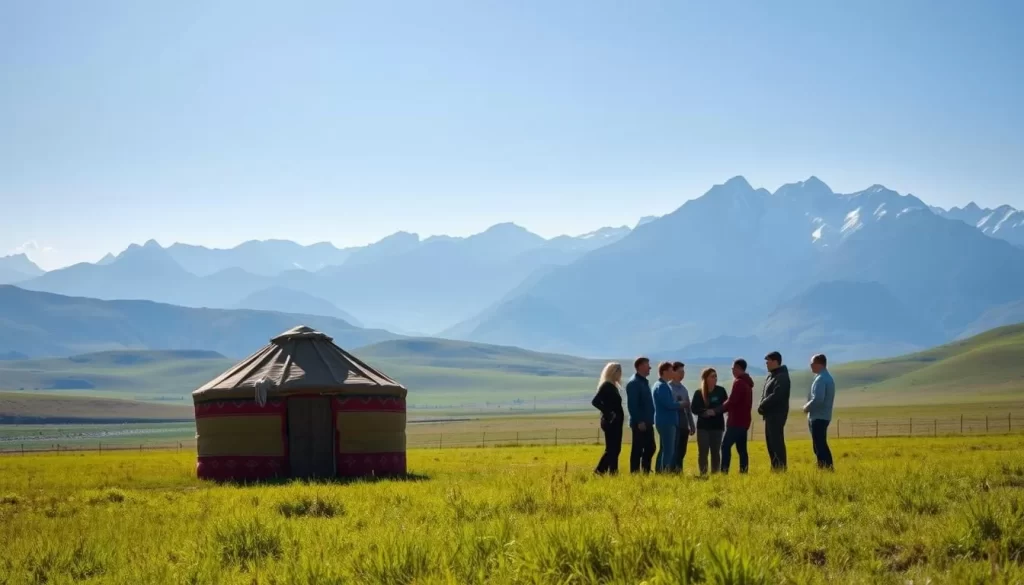
The administrative role of the autonomous region is crucial in preserving linguistic traditions. Local governance ensures that minority languages are integrated into public services and cultural programs. This approach helps maintain the region’s unique identity.
Provincial policies play a significant role in language support. For example, schools in the region teach both Mongolian and Chinese, ensuring bilingual proficiency among students. This dual-language education system is a cornerstone of the region’s cultural strategy.
Understanding the importance of language in this region’s identity is key. The blend of tradition and policy here creates a vibrant linguistic landscape. This balance is a testament to the region’s resilience and adaptability.
| Aspect | Details |
|---|---|
| Official Languages | Mongolian and Chinese |
| Language Education | Bilingual curriculum in schools |
| Cultural Programs | Integration of minority languages |
| Population (2023) | 23.96 million |
| Mongolian Population | 17.66% (2021) |
This table summarizes the key aspects of language policy and usage in the region. It highlights the region’s efforts to balance tradition and modernity in its linguistic practices.
Education and Language Policy in Inner Mongolia
Education plays a pivotal role in shaping the linguistic future of any society. In this region, recent shifts in language policy have sparked significant changes in the education system. These changes aim to balance cultural preservation with modern governance, but they also raise questions about the future of minority languages.
Curriculum Changes and Language Testing
Starting in September 2020, the curriculum underwent a major transformation. Mandarin became the primary language for teaching subjects like Language and Literature, Morality and Rule of Law, and History. This shift has impacted bilingual education, which has long been a cornerstone of the region’s education system.
Teachers are now required to pass stringent tests to prove their proficiency in the standard Mongolian dialect. These tests ensure that educators can effectively support students in a multilingual environment. However, the changes have led to debates about the preservation of minority languages and cultural identity.
Government policies play a crucial role in shaping these educational practices. For example, the introduction of new textbooks in 2020 aimed to standardize teaching materials across the region. While this move was intended to improve consistency, it also raised concerns about the marginalization of traditional languages.
| Aspect | Details |
|---|---|
| Curriculum Changes | Mandarin as primary language for key subjects |
| Teacher Testing | Proficiency in standard Mongolian dialect required |
| New Textbooks | Introduced in 2020 for standardization |
| Impact on Students | Shift in language focus affects bilingual education |
These changes highlight the ongoing evolution of educational practices in a multilingual context. While the government provides support for bilingual education, the emphasis on Mandarin raises questions about the future of minority languages. For more insights on recent policy shifts, visit this detailed analysis.
Cultural Identity and Language Preservation
Language is more than just words; it’s a bridge to cultural identity and heritage. For many, preserving their native tongue is a way to stay connected to their roots. This is especially true for ethnic groups who see their language as a vital part of who they are.
The Role of Religion and Tradition
Religious practices and traditional ceremonies play a significant role in keeping languages alive. For example, many rituals are conducted in the native tongue, ensuring its continuity. These practices are not just about faith; they’re about preserving a way of life.
In daily life, traditions like storytelling and folk songs pass down language from one generation to the next. These activities create a strong bond between the speaker and their cultural identity.
Community Efforts and Revival Movements
Grassroots initiatives are crucial in language preservation. Communities often come together to teach younger generations their native tongue. These efforts are a form of resistance against cultural erosion.
For instance, petitions and protests have been organized to protect language rights. Over 21,000 signatures were collected in a single day, showing the community’s commitment to their heritage.
Revival movements also focus on education. Bilingual programs in schools help students learn both their native language and the dominant tongue. This balance ensures that cultural identity remains strong.
| Initiative | Impact |
|---|---|
| Community Classes | Teach native languages to younger generations |
| Petitions | Raise awareness and protect language rights |
| Bilingual Education | Promote cultural and linguistic diversity |
These efforts show how language preservation is tied to personal and cultural identity. By keeping their language alive, communities ensure their heritage continues to thrive. For more on how these initiatives are shaping the future, visit this detailed analysis.
Economic and Urban Influences on Language Trends
Urban growth and economic shifts are reshaping how people communicate in this area. Cities like Hohhot and Baotou are leading this change, with Mandarin becoming the dominant language in commercial and public sectors. This trend reflects the broader impact of modernization on traditional language use.
Economic development plays a key role in these changes. As industries expand, new language practices emerge at various levels of society. For example, 40% of Mongolian speakers in urban areas prefer using Mandarin in daily communication. This shift highlights the influence of market forces on linguistic habits.
Urban centers act as hubs for language change. In a country where state and local languages interact, cities often set the tone for linguistic trends. Studies show that 70% of the population in this autonomous region identifies as bilingual, speaking both Mongolian and Mandarin. This bilingualism is a direct result of urban influences.
However, tensions arise between economic modernization and traditional language use. While Mandarin gains prominence, efforts to preserve minority languages continue. For instance, over 50% of local radio broadcasts are conducted in Mongolian. This balance reflects the region’s commitment to cultural heritage.
Statistical data supports these observations. The urban population has grown significantly, with a 15% increase in the annual budget for minority language education over the past five years. These numbers underscore the dynamic interplay between economy and language. For more insights on this topic, explore this detailed analysis.
Understanding these trends helps you appreciate the complexities of language in a modernizing society. The balance between tradition and progress remains a key challenge in this autonomous region today.
Conclusion
Every day, language shapes the way people connect with their heritage. In this area, the national language policies have played a key role in preserving cultural identity. Over the years, shifts in education and governance have influenced how communities use their native tongues.
From historical revivals to modern challenges, language remains a vital part of society. Significant years, like 1979 and 2020, mark turning points in this journey. These moments highlight the resilience of local dialects and scripts.
Understanding this linguistic evolution helps you appreciate the region’s vibrant identity. Language is not just a tool for communication but a living part of cultural heritage. For more insights, explore this detailed analysis.
The above is subject to change.
Check back often to TRAVEL.COM for the latest travel tips and deals.
